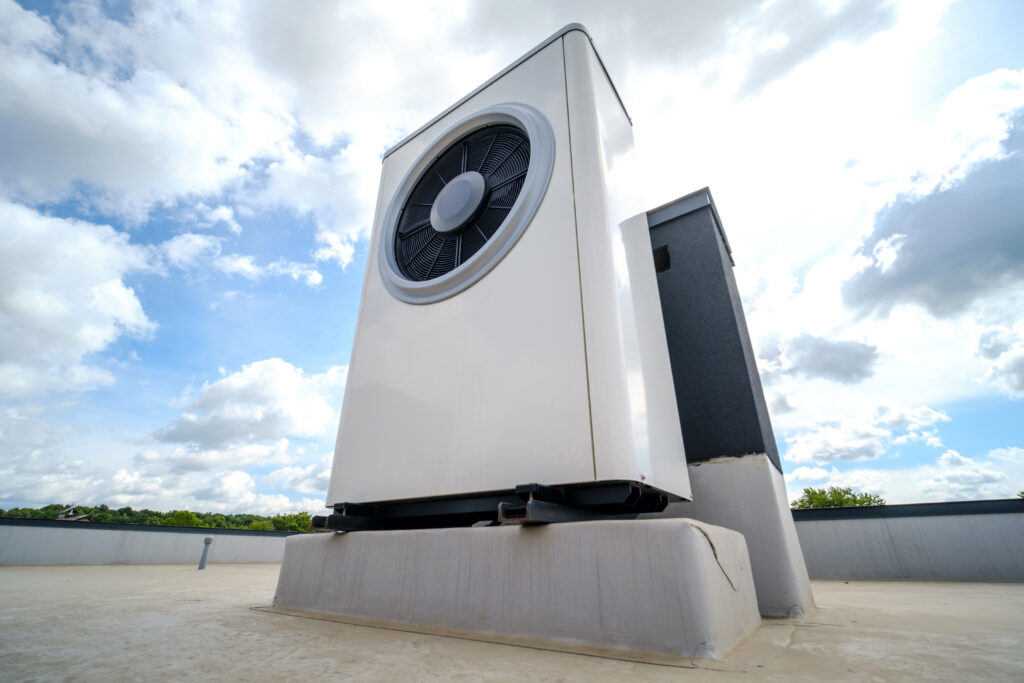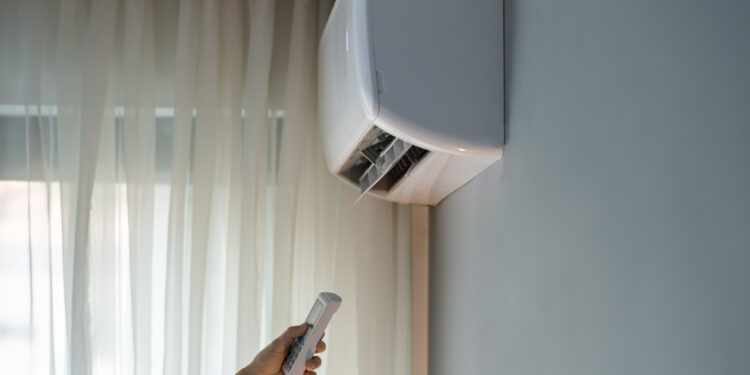Carrier Global Corporation (NYSE:CARR) is one of the world’s most historically significant and technologically influential companies in the climate control industry, tracing its roots to 1902 when Willis Carrier invented modern air conditioning. This breakthrough revolutionized indoor environments, enabling controlled temperature and humidity in factories, homes, hospitals, and commercial buildings, transforming global productivity and quality of life. The company grew from a pioneering engineering firm into a global powerhouse in heating, ventilation, air conditioning, and refrigeration solutions, known for innovation and reliability across residential, commercial, industrial, and aerospace sectors. Carrier became synonymous with climate technology as it expanded internationally, supplying advanced systems to skyscrapers, data centers, supermarkets, pharmaceutical facilities, and mission-critical infrastructures that require precision temperature management.
Over the decades, Carrier expanded its portfolio through internal innovation and strategic acquisitions, integrating fire and security technologies, energy management systems, cold chain logistics solutions, and building automation services. Its products have played a key role in global infrastructure development, from enabling food preservation in long-distance shipping to creating climate-controlled environments in healthcare and aviation. After operating for decades under United Technologies Corporation, Carrier Global became an independent public company in 2020, listed on the New York Stock Exchange under the ticker symbol CARR. The spin-off marked a pivotal moment in the company’s evolution, enabling it to sharpen its focus on climate technology and sustainability while accelerating investment in environmentally responsible and energy-efficient solutions.
Carrier today operates in more than 160 countries and serves governments, multinational corporations, and millions of households worldwide through a vast network of brands including Carrier, Toshiba, Riello, Kidde, Edwards, and Automated Logic. The company is also a leader in the transition to low-carbon technologies, investing heavily in heat pumps, digital building management platforms, IoT-enabled systems, and refrigerants with reduced environmental impact. As global regulations tighten on energy efficiency and carbon emissions, Carrier has strategically positioned itself at the center of sustainable infrastructure innovation, targeting growth in green buildings, smart cities, and climate-resilient technologies. While its legacy is built on mechanical innovation, Carrier is increasingly transforming into a digital solutions provider, integrating analytics, automation, and AI to optimize performance and reduce energy consumption.
High Valuation Meets Declining Fundamentals
Carrier currently trades at 20.2x forward earnings, a significant premium for a cyclical industrial business facing slowing organic growth. Analyst consensus places its average 12-month price target at $75.52, implying a 31.6% return—but this bullish target sharply contrasts with unfavorable financial data that shows deteriorating revenue quality and margin erosion. The stock price of $57.38 embeds a forward-looking optimism that Carrier will re-accelerate profitability and cash flow—yet key performance metrics signal the exact opposite. The company has underperformed organic growth benchmarks for the past two years, signaling weakness in its product competitiveness, pricing power, and go-to-market execution. At a time when economic uncertainty is slowing residential construction and commercial retrofits, Carrier’s valuation is vulnerable to re-rating if earnings disappointment persists.

CHECK THIS OUT: NioCorp (NB)’s $1.14B Elk Creek Project Set to Transform U.S. Critical Minerals Supply and Endeavour (EXK) Poised to Double Output With Kolpa and Terronera Expansion.
Organic Growth is Losing Momentum
One of the most concerning red flags comes from Carrier’s organic revenue trajectory. Its growth has trailed analyst benchmarks over the last two years, revealing not just macroeconomic weakness, but deeper issues in its innovation cycle and commercial strategy. When a company with strong global brand recognition is still unable to outperform industry peers, it signals market saturation or rising competition. The slowdown implies that Carrier may be losing its historical moat in a sector now being disrupted by new entrants, rapidly evolving decarbonization technologies, heat-pump innovation in Europe, and digital building management systems that competitors are deploying faster.
Free Cash Flow Efficiency Is Deteriorating
Over the past five years, Carrier’s free cash flow margin has shrunk by 5.3 percentage points, reflecting a company becoming increasingly capital intensive. This decline points to rising costs of operations, higher inventory needs, and increased capital expenditures to maintain competitiveness. Instead of benefiting from economies of scale, Carrier is facing the opposite dynamic: growth is becoming more expensive to pursue. In capital-intensive industries like HVAC manufacturing, declining cash flow margins are clear warning signs of reduced financial flexibility, greater vulnerability to economic cycles, and an increased risk of future debt or equity financing.
Return on Capital Is Falling, Signaling Structural Decline
Carrier’s weakening returns on capital reveal that its former profit engines—once industry-leading—are beginning to lose momentum. Returns on invested capital are critical indicators of a company’s ability to generate wealth from its core operations. As returns decline, it signals that Carrier either needs large incremental capital just to maintain its position, or that new growth initiatives are delivering lower-than-expected profitability. This pattern is common among mature industrial companies entering the late stage of their growth cycles. The implication is clear: Carrier could be on the precipice of a long-term value compression phase where earnings growth slows while capital requirements rise, leading to reduced shareholder returns.
Macroeconomic Headwinds Are Escalating Risk
Carrier’s core business is directly linked to the health of the housing market, construction activity, and commercial real estate development—all sectors currently experiencing volatility due to elevated interest rates and declining global demand. As residential HVAC replacement cycles slow and commercial projects are delayed or canceled, Carrier’s revenue becomes more exposed to cyclical downturns. Furthermore, European markets—where heat pump adoption should be a growth catalyst—are facing regulatory uncertainty and demand hesitation, creating an unpredictable sales environment.
Competitive Pressure Is Intensifying
The global HVAC industry is no longer dominated by a few legacy manufacturers. New competition from Asian manufacturers is exerting price pressure, while established rivals such as Trane Technologies and Daikin are investing aggressively in digital efficiency systems and IoT-driven climate control technologies. As the sector moves toward smart, connected, and energy-efficient solutions, companies that fail to capture digital recurring revenue streams will be left behind. Carrier’s current product suite is still heavily reliant on legacy hardware revenue, which exposes it to margin compression as the industry shifts toward software-driven platforms.
Premium Valuation Is No Longer Justified
Carrier’s current valuation assumes a return to cash flow expansion and organic revenue acceleration. But the data clearly shows the opposite trend: lower free cash flow, shrinking returns on capital, and competitive threats eroding growth opportunities. Trading at a forward P/E of 20.2x during a period of weakening fundamentals suggests that the market may be underestimating downside risk. If growth expectations are not met, a sharp de-rating is likely, pushing the stock toward a lower earnings multiple more consistent with industrial sector averages.
Conclusion: A Legacy Giant at Risk of Structural Compression
Carrier Global may still evoke strong brand recognition and trade at a premium as a climate technology pioneer, but investors should be cautious. Weak organic growth, deteriorating free cash flow margins, rising capital intensity, and declining returns on capital point to a company entering a period of structural margin pressure. At its current valuation, Carrier is priced for acceleration, not stagnation. Without a significant reinvention of its product strategy or a dramatic shift in macroeconomic conditions, the stock faces more downside risk than upside potential. For investors seeking stable growth and expanding profitability, the current trajectory of Carrier Global suggests caution rather than confidence.
CHECK THIS OUT: NioCorp (NB)’s $1.14B Elk Creek Project Set to Transform U.S. Critical Minerals Supply and Endeavour (EXK) Poised to Double Output With Kolpa and Terronera Expansion.






